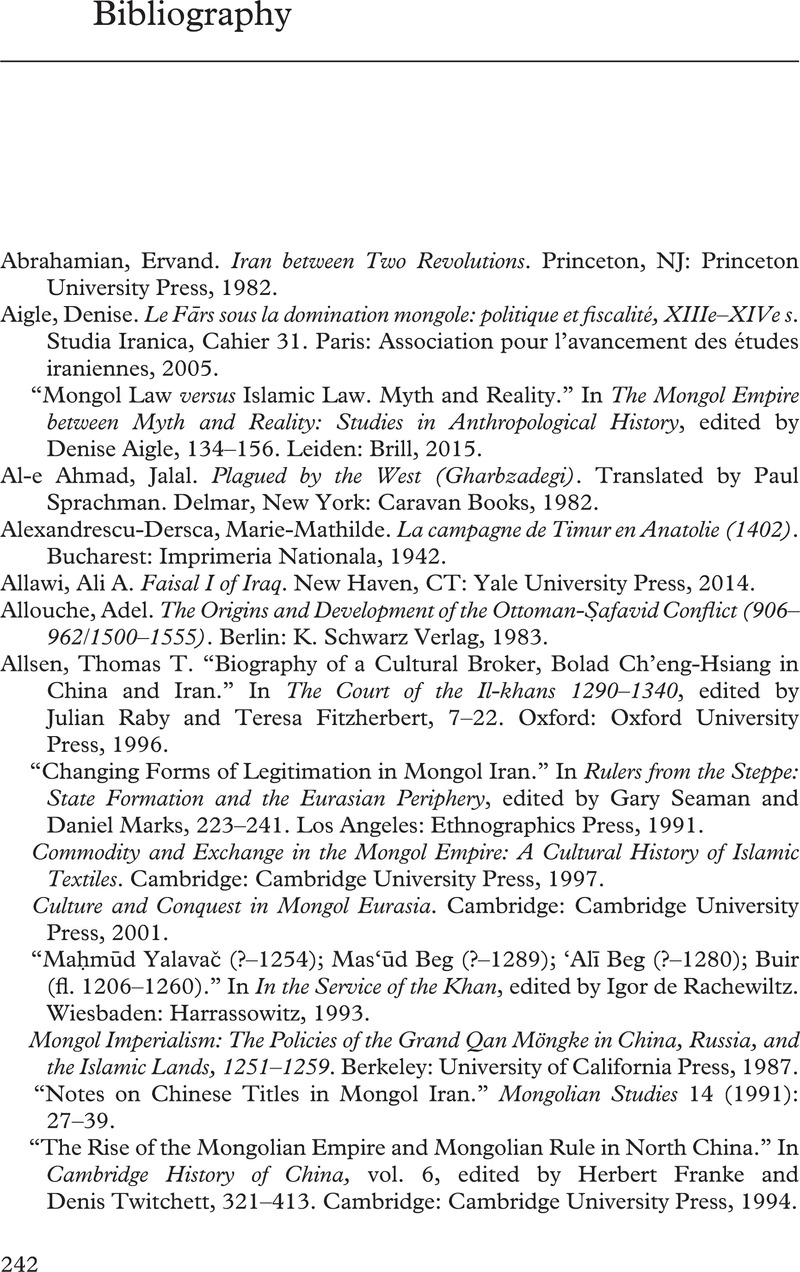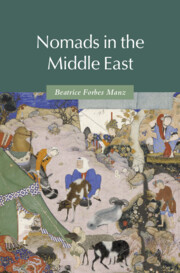Book contents
- Nomads in the Middle East
- Series page
- Nomads in the Middle East
- Copyright page
- Dedication
- Additional material
- Contents
- Figures and Maps
- Preface
- Maps
- Debate between Sheep and Grain
- 1 Introduction
- 2 Nomads in the Establishment of the Caliphate
- 3 The Rise of New Peoples and Dynasties
- 4 Turkic Tradition and Seljuqid Rule
- 5 Mongol Conquest and Rule
- 6 After the Mongols: Timurids, Turkmen and Ottomans
- 7 The Rise of Nomad Tribes,1500–1800
- 8 Nomads in the Modern Middle East
- 9 Conclusion
- Bibliography
- Index
- References
Bibliography
Published online by Cambridge University Press: 12 November 2021
- Nomads in the Middle East
- Series page
- Nomads in the Middle East
- Copyright page
- Dedication
- Additional material
- Contents
- Figures and Maps
- Preface
- Maps
- Debate between Sheep and Grain
- 1 Introduction
- 2 Nomads in the Establishment of the Caliphate
- 3 The Rise of New Peoples and Dynasties
- 4 Turkic Tradition and Seljuqid Rule
- 5 Mongol Conquest and Rule
- 6 After the Mongols: Timurids, Turkmen and Ottomans
- 7 The Rise of Nomad Tribes,1500–1800
- 8 Nomads in the Modern Middle East
- 9 Conclusion
- Bibliography
- Index
- References
Summary

- Type
- Chapter
- Information
- Nomads in the Middle East , pp. 242 - 267Publisher: Cambridge University PressPrint publication year: 2021



